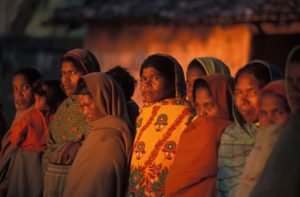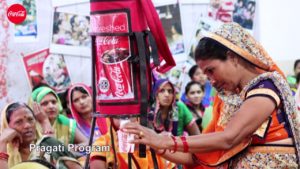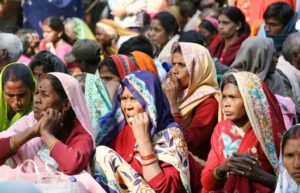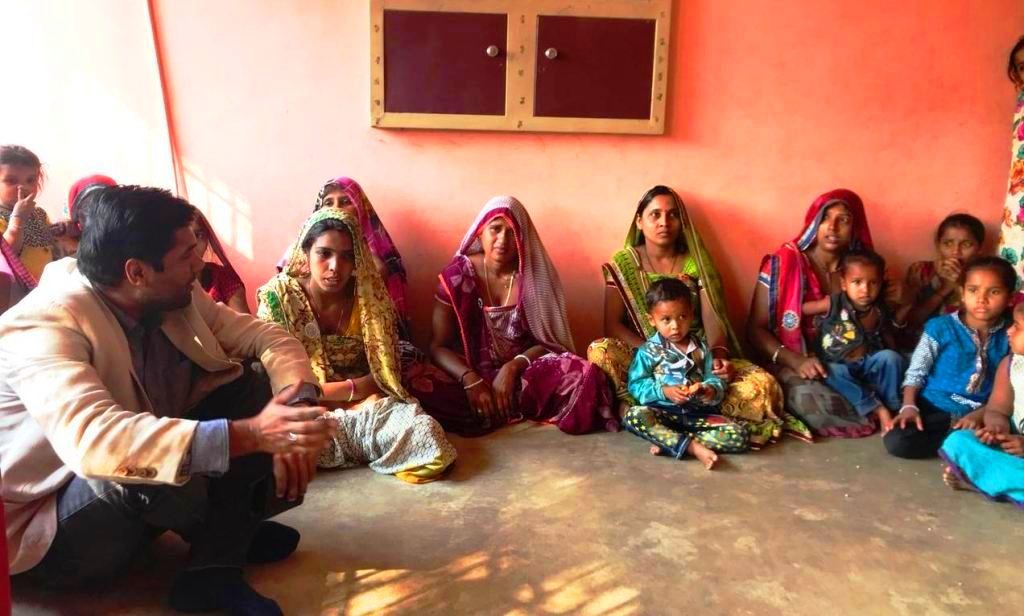During my time covering CSR across organisations of all types and hues, I have learnt two things: 1) keep your expectations low when fielding questions to them, and 2) everyone wants to ’empower’ women. The latter has, over the past many years, become the causa principalis for almost all corporates and not-for-profit entities. That, and education. Even when there’s little reason to believe the organisation in question has the intent, expertise, or understanding.
A recent NY Times article got me thinking: what did women empowerment mean anyway? Who should be doing the empowering? Do women need/want to be empowered? Is there any point empowering them when society still runs patriarchal? The Times article reveals the absurdity of such schemes – for instance, India Partners gives donors the chance to empower an Indian woman for only $100 by providing her with her own sewing machine! Or take the well-known NGO Pradan, which, as per Melinda Gates, can empower women through the simple act of giving them chickens to farm.
So, no, a little bit of empowerment doesn’t go a long way.
The problem with this kind of empowerment programmes (noted by the same article as well) is that it presupposes that economic empowerment leads to political, social and cultural capital. ‘The personal is political’ may be a feminist rallying cry but there’s little evidence to suggest that these schemes care much about the former bit. What good is a few thousand rupees extra if it merely burdens the woman further in her daily life – aside from doing all domestic and care labour, she’s saddled with another few hours of wage labour. Or if the same extra money doesn’t lead to personal freedom wherein she earns the same respect and status as that of the male members in her family and community? If her empowerment is contingent upon the approval of others, is there much point to her slaving hard over that sewing machine? Where is the empowerment there?
While there’s nothing wrong per se in helping women become economically independent and better-off, divorcing it from their lived realities makes it less likely that the economics of empowerment will translate into meaningful, long-term changes. In their paper Emissaries of Empowerment, Kate Cronin-Furman, Nimmi Gowrinathan and Rafia Zakaria posit that, ‘(this) approach fail(s) to grapple with non-Western women as full subjects and instead collapses their identity to the circumstances of their victimhood. Empowerment programming is explicitly depoliticising, obscuring women’s relationships to power and the state.’ While the authors were referring to ‘white saviours’ as guilty of this kind of reductive thinking, the same can be easily extended to their Indian counterparts, particularly the corporate”NGO nexus that hails this sanitised, anodyne way of uplifting women.
As noted by many feminists, originally ’empowerment’ in the context of women’s rights was ‘to begin transforming gender subordination and in the process to break down other oppressive structures as well’ through collective ‘political mobilisation’. Similarly, the 1995 UN Fourth World Conference on Women in Beijing called for women’s empowerment on the basis of ‘equality in all spheres of society, including participation in the decision-making process and access to power.’ Women empowerment is usually defined in terms of women having agency and control over their own lives and becoming active participants in societal processes, thereby achieving gender equality in all aspects.
As CARE, the global NGO, noted, ‘Research and experience show that simply including women in development projects does not lead to women’s empowerment, nor to lasting impacts on poverty. Providing women with a few skills, then expecting them to conquer age-old injustices, is not effective.’ CARE also found that such initiatives that do not take into account a holistic view of women’s lives and constraints can lead to:
- Gains that are easily reversed;
- Increased burdens on women and girls; and/or
- Violent backlash from those who see empowerment as threatening or a zero-sum game between men and women.

Pick up any CSR policy document of a company at random and chances are that women empowerment will be featured prominently. The cruellest (and quite ironical) twist in this narrative is that even ISIS has touted this as one of the main causes of their admittedly different mission. That pretty much sums up the appropriation of this otherwise noble cause. The problem of the hands-off, technical approach favoured by most organisations is that it doesn’t take into account the fact that empowerment is constantly fed and enabled by the conditions and context surrounding women. The myriad factors that conspire to keep them oppressed and dependent on others isn’t limited to monetary aspects; the interconnected issues of societal norms, domestic labour, family and community hierarchy, etc., often take precedence over the economic ones. In India, factors such as religion, caste, class, region, practices, politics and historical context play a huge part in determining the position of women in her family and society. Often times, it seems that outside entities forget these simple facts.
This depoliticised approach may seem neutral; however, the downside is that the resultant empowerment ends up being hollow. Empowerment becomes another euphemism for entrepreneurship – provide training in some sort of ‘skill’ or livelihood (tailoring, poultry farming, basket weaving, handicrafts making, beauty salons, etc.) and the basic toolkits, and voila! Women are empowered. While individual stories are highlighted, what remains conveniently ignored is that while empowerment can happen sometimes in individual cases, these isolated instances do not reflect the well-being of most members of the same community.
More often than not, data on medium- to long-term effects – such as income, literacy rates, decision-making powers, participation in local politics, health and nutrition, physical/sexual violence, etc. – go amiss when one reads the annual reports of the same organisations. Deepti might be earning Rs 5,000 per month thanks to her sewing machine, but has her condition at home and outside improved? And what about the other Deeptis in her village/town? Did they benefit too? Or is she an outlier, the smiling face that will be plastered all over these reports?
 The metrics chosen to track progress (if at all they exist) of these initiatives may not always reflect the true impact. For example, most companies provide numbers on the total enrolment of girls in schools that they have adopted. What is of equal importance is the dropout rate, which is hardly tracked. For example, when so-and-so company or foundation provides scholarships to girl students, we have no idea how they are chosen, if they have enough support at home to enable regular studies, if they are too busy helping their parents earn a living or doing domestic chores, and if, after all these hurdles, they are able to realise some of their dreams.
The metrics chosen to track progress (if at all they exist) of these initiatives may not always reflect the true impact. For example, most companies provide numbers on the total enrolment of girls in schools that they have adopted. What is of equal importance is the dropout rate, which is hardly tracked. For example, when so-and-so company or foundation provides scholarships to girl students, we have no idea how they are chosen, if they have enough support at home to enable regular studies, if they are too busy helping their parents earn a living or doing domestic chores, and if, after all these hurdles, they are able to realise some of their dreams.
 Consider Unilever’s Fair & Lovely Foundation – there’s little effort in ensuring that the 1,400+ girls actually realise a fair and lovely future because this entails a much deeper intervention that will require a long-term commitment to changing attitudes of the community at large and unifying women for their own good. Godrej’s Saloni programme is a well-known initiative that trains women from poor backgrounds for over three months in beauty and hair care. However, 75 per cent of the Saloni graduates work as freelancers or micro entrepreneurs and there’s little data on their economic stability and income.
Consider Unilever’s Fair & Lovely Foundation – there’s little effort in ensuring that the 1,400+ girls actually realise a fair and lovely future because this entails a much deeper intervention that will require a long-term commitment to changing attitudes of the community at large and unifying women for their own good. Godrej’s Saloni programme is a well-known initiative that trains women from poor backgrounds for over three months in beauty and hair care. However, 75 per cent of the Saloni graduates work as freelancers or micro entrepreneurs and there’s little data on their economic stability and income.
 Unilever’s Project Shakti, wherein women receive training to sell Unilever products (which they receive at a discounted rate), is described as a way to ‘develop an entrepreneurial mindset and make them (women) financially independent and more empowered.’ However, beyond the number of 72,000 ‘micro-entrepreneurs’, as they are called, there’s not much else to go on”we may as well be looking into a black hole of supposedly empowered women. Some may be inclined to describe this kind of programme as less empowerment and more like cheap labour.
Unilever’s Project Shakti, wherein women receive training to sell Unilever products (which they receive at a discounted rate), is described as a way to ‘develop an entrepreneurial mindset and make them (women) financially independent and more empowered.’ However, beyond the number of 72,000 ‘micro-entrepreneurs’, as they are called, there’s not much else to go on”we may as well be looking into a black hole of supposedly empowered women. Some may be inclined to describe this kind of programme as less empowerment and more like cheap labour.
 Similarly, Coca-Cola India’s initiatives like Pragati and Parivartan, focused on training and capacity building, only seem to refer to the number of women trained and impacted. On the other hand, there is the programme by Anandana, the Coca-Cola Foundation, which provides solar lanterns to non-electrified houses, with the same being maintained and repaired by women specially trained for this. This programme is much better in its strategy and impact since it provides livelihood opportunities, solves a pressing need (electricity), and is environment-friendly.
Similarly, Coca-Cola India’s initiatives like Pragati and Parivartan, focused on training and capacity building, only seem to refer to the number of women trained and impacted. On the other hand, there is the programme by Anandana, the Coca-Cola Foundation, which provides solar lanterns to non-electrified houses, with the same being maintained and repaired by women specially trained for this. This programme is much better in its strategy and impact since it provides livelihood opportunities, solves a pressing need (electricity), and is environment-friendly.
ICICI Foundation’s Rural Self-Employment Training Institutes have seen 66 per cent women participants. These also provide loans and help in capacity building of self-help groups (SHGs). What we know is that since 2012 the bank has loaned over Rs 5,500 crore to more than 25 lakh women in rural India. What we don’t know is the long-term state of these SHGs and their participants.
This then brings us to the most favoured SHG route taken by many corporates and NGOs. These SHGs are specifically designed for the poor, marginalised women in developing countries like ours. The rate at which NGOs have mushroomed over the past many years attempting to help women help themselves has been breathtaking, to say the least. Some of the more well-known ones like Pradan have breadth and scale but the success rates of these SHGs are unknown. SHGs also remain the medium of choice for corporates like ITC, Amul and even Essar, perhaps because they appear to be more autonomous and self-reliant than merely conducting a few training sessions. Essar proudly proclaims that it ‘encourages rural women to earn alternate and additional income through SHGs.’ Anyone would think that these women were sitting idle and needed someone to goad them into action.
Interestingly, one of the few studies (albeit limited in scope) that have been taken up on this specific topic was by Vinita Dave in 2013. It found that CSR programmes of the three companies under consideration had limited impact on the women beneficiaries, with negative responses to questions such as whether these programmes created employment for them and whether these provided a competent platform for upliftment of women. About half of the respondents were of the opinion that these CSR activities were not supportive of women empowerment.

Depoliticising the process of empowerment, when politics and resistance movements may be critical factors in their true emancipation, helps no one. Mere lip service is of no use when gender disparity and discrimination are the norm rather than the exception in our society. Collective action and awareness of issues are often the only true course towards sustainable gender equality. Livelihood enhancement can be one of the enablers, sure, but it is one of many and not sufficient in and of itself.
Here are some suggestions that should form an integral part of any empowerment initiative:
1. It is important to recognise women as their own true agents who deserve rights and freedom on their own terms. The same woman who they are trying to save should be put front and centre in devising the strategies, goals, design, analysis and evaluation of the programmes, instead of framing her as a passive victim. Giving them the option of sewing or weaving is not really a choice; it is an illusion. Involving them in advocacy is also a great way to nurture future leaders, and should be one of the goals of any such initiative. Care also needs to be taken that the stereotypical ‘feminised’ jobs aren’t the only ones on the table; the idea should be that any job a man does can be done equally well by a woman.
2. Programmes need to take cognisance of the needs of the targeted communities and where those meet the company’s own objectives. These should also exploit the competencies of the company and not just that of partner NGOs. One may work with the best organisations in this field but if the company’s contribution is limited to funding and occasional progress reports, can they really claim to have a hand in helping those women?
3. Before embarking on any programme, data gathering on the current state and conditions of the target group is a critical first step. This needs to be looked at through a gender lens. Gender-based analysis, regular data gathering, and specific targets based on women empowerment need to be inbuilt in the programme’s design.
4. Can it be process-based rather than target-based? Empowerment isn’t akin to building a school and hoping some of the students end up doing well; it means helping women change their personal conditions for the better and gain the ability to change it for others around them as well. Any initiative that truly wants to help women has to comprehensively take a 360-degree view of their lives. It, then, naturally follows that these programmes cannot be of a short duration. A two to three years’ programme may seem like it’s working in the short term but is unlikely to reap long-term benefits. A better strategy would be to support the programme for some years at least (depending on the nature of the intervention) and, if required, handing it off to grassroots organisations committed to seeing it through to the next phase. While targets are important (when are they not?), getting the nuts and bolts of the process right is equally important.
A necessary corollary to this is funding, which would have to be long-term and flexible, unlike, say, donating to the PM’s Relief Fund. The very nature of these projects demands funding commitment that is sustainable and not dependent on quarterly results. Progress will be slow but as long as it moves in the right direction, it will yield tangible results.
 5. Measuring results and tracking output need to be far more robust than they are currently. Any empowerment programme needs to be evaluated on the basis of whether they enable women to increase their access to, and potential for, political mobilisation. The type of metrics used can often be the key to the success of the programme – for example, the number of trained women who acquired employment and duration of their employment, control of assets such as farms and capital, economic stability, standard of living, awareness of key issues, participation in local politics and community organising, savings generated, access to good healthcare and birth control, reproductive choices, nutrition levels, dropout rates, and regular assessment and benchmarking of language and math skills. Other less obvious parameters such as household norms (for example, whether they are the last to eat meals in their families), domestic-violence occurrences, decision-making powers, access to safe spaces, and change in male attitudes are all good indicators of actual empowerment. And at the very least, these need to be tracked for a few years for each participant, or till the time they are confident and assured of their own future.
5. Measuring results and tracking output need to be far more robust than they are currently. Any empowerment programme needs to be evaluated on the basis of whether they enable women to increase their access to, and potential for, political mobilisation. The type of metrics used can often be the key to the success of the programme – for example, the number of trained women who acquired employment and duration of their employment, control of assets such as farms and capital, economic stability, standard of living, awareness of key issues, participation in local politics and community organising, savings generated, access to good healthcare and birth control, reproductive choices, nutrition levels, dropout rates, and regular assessment and benchmarking of language and math skills. Other less obvious parameters such as household norms (for example, whether they are the last to eat meals in their families), domestic-violence occurrences, decision-making powers, access to safe spaces, and change in male attitudes are all good indicators of actual empowerment. And at the very least, these need to be tracked for a few years for each participant, or till the time they are confident and assured of their own future.
A good but imperfect example is Kellogg Company and CARE’s programme for women smallholder farmers in Odisha. The impact is measured through a customised Women Empowerment Index in the maize value chain that tracks five ’empowerment’ domains: production, resources, income, autonomy/time and leadership. Further, a Coping Strategy Index is used to assess improvements in coping mechanisms accessible to these women so as to pursue resilient livelihoods.
6. Economic empowerment cannot be isolated from other issues that afflict women. Violence and sexual harassment pervade the lives of many, many women, whether at home or outside. Certain groups of women such as migrant workers in the informal sector are at a higher risk. While the main objective can be to provide them tools to earn regular income or receive a decent education, corporates and NGOs would do well to make them aware of their rights and legal recourses, and give them the support and confidence to say no and fight back. It is imperative that women are given all possible information on their rights, as individuals, as a labour force, and as citizens. When UN Women’s Fund for Gender Equality took up a project called the Dalit Women’s Livelihood Accountability Initiative (DWLAI) to raise awareness about Mahatma Gandhi National Rural Employment Guarantee Act (MGNREGA), they ensured that the targeted women were aware of workers’ rights under this programme. Soon, women started organising themselves and demanding work from this scheme as well as basic benefits that they were entitled to, such as on-time wages, drinking water, work shelters, and first-aid boxes. There is a lot that women can achieve collectively when given the right tools.
However, care needs to be taken that official laws don’t take centre stage, especially when local customs may take precedence over them. It is essential that women are educated on how laws are implemented and enforced, and how they can use them for their own advancement. Equally important is to challenge existing norms that are antithetical to their empowerment. Here, community organising and education become critical. Giving local players a stake in the success of the process is a tried and tested way to get them on-board.
Men often look at these interventions as a zero-sum game (by empowering women, my existing power is being taken away). By making them stakeholders in these initiatives, they can be made allies in the quest to empower women.
7. Extending this philosophy, securing male support can make a huge difference towards the long-term viability of these programmes. While unfortunate, in a patriarchal society like ours, men are still considered the head of the household and wield much power. Often, attempts to help the women in their families or communities are looked at suspiciously by men and, in many cases, face outright opposition. Men often look at these interventions as a zero-sum game (by empowering women, my existing power is being taken away). By making them stakeholders in these initiatives, they can be made allies in the quest to empower women. Another positive fallout of this approach is that violence against women may come down – this then becomes a significant step towards true gender equality. Some women-empowerment initiatives have extended the programme to men as well. Involving them directly may not be a bad idea, as long as the main focus remains on helping the women.
8. Companies would do well to facilitate safe spaces and social networks (not of the Facebook kind) for women and young girls. These could be supplementary to the main efforts but can make a huge difference to the long-term success of the programmes. Creating platforms where women help and look out for each other, exchange ideas and information, and establish friendships can ensure that this environment of oneness, of community, can push back against orthodox practices and resolve problems that are going to be inevitable in the quest for true freedom. SHGs purport to do this but irrespective of the nature of the intervention, informal networks of women armed with sufficient knowledge should be encouraged.
 9. At the same time, these same organisations need to practise what they preach – there’s no sense or honour in valourising women empowerment when your own organisation does little to combat gender discrimination within it. By ensuring a fair, level-playing field for women employees that actively promotes and invests in female talent within the organisation, they can set a great example for others. It is known that people are more likely to champion a cause when they have directly benefited from it. A company or an NGO that truly empowers its own women employees will find more than willing participants to help empower others.
9. At the same time, these same organisations need to practise what they preach – there’s no sense or honour in valourising women empowerment when your own organisation does little to combat gender discrimination within it. By ensuring a fair, level-playing field for women employees that actively promotes and invests in female talent within the organisation, they can set a great example for others. It is known that people are more likely to champion a cause when they have directly benefited from it. A company or an NGO that truly empowers its own women employees will find more than willing participants to help empower others.
Women empowerment is a worthy cause to fight for but the odds of it being done the wrong way and with the wrong intention are often high. Such programmes can, at best, maintain the status quo and, at worst, make things even more difficult for the women. Corporates and NGOs need to stop trying to save these women and start treating them as equals who should be in control of their lives, including the projects designed to help them.
Politically active, economically savvy, socially aware are what truly empowered women are. Women have suffered enough at the hands of a society that victim-blames and victimises them; there’s no need for CSR programmes to act as their knights. With some genuine support, women can save themselves.
